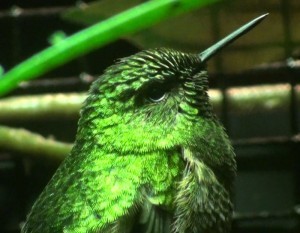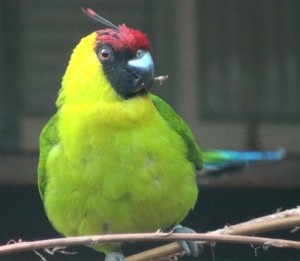Welt Vogel Park
Whenever I find myself in a new place, I make it a point to learn about the local animals. Of course I have a strong bend towards avian species and am always curious if there is a bird park nearby. On a 2013 trip to attend a conference in Germany, I came across such a park worthy of sharing- to the world. I will always be thankful to Dr Andreas Frei, head veterinarian for Welt Vogel Park, who hooked up my friends and I for a guided tour of his workplace.
The rumors were ‘it is the largest collection of bird species in the world’, ‘the grounds are beautiful’, ‘the birds are kept in amazing naturalistic environments’ and ‘there is simply too much to see in one day’. Even driving the Autobahn, it was a 4 hour drive from my conference site to north central (Lower Saxony) Germany in a town called Walsrode. A team of eager bird veterinarians hoped in cars early in the morning to see this famed park.
All I can say is that the 8 hours round trip to see Welt Vogel Park was well worth it! Translated from German, Welt Vogel Park means ‘World Bird Park’. This is an apt description for park that is vast and contains birds from well, all over the world. It was spring time and the grounds were not only immaculately kept but beautifully planted. With the perfect weather, amazing scenery and birds everywhere, it almost seems as though this group of avian veterinarians was brought here by a higher cause to tell the world about what we found. Ok, so I realize that not every day in Walsrode is perfect, but it was that day! Even if you were to take away the scenery and weather, you will still see some amazing birds.
Take for instance, the green tailed trainbearer (Lesbia nuna). Never heard of it? Me neither! Well it’s a hummingbird from South America with a long tail and beautiful iridescence we expect of hummingbirds. What amazed me most is that they are actually breeding and raising these birds. This requires creating an environment with controlled humidity, temperature, food and even 24-hour ‘nest-cams’ focused on hand woven nests complete with safety systems to ensure precious eggs and chicks are spared if they were to fall out. The intense dedication to detail and care is almost beyond belief. However, the staff has been successfully raising these birds and has displayed this incredible species for the world to see. Birds of paradise from New Guinea have recently been photographed and reported in National Geographic and have been the subject of a number of educational videos and slideshows. For most of us, going to New Guinea and trudging through dense jungle to see birds of paradise is simply not an option. This becomes even more apparent if you read what photographers went through to get those amazing bird of paradise pictures! You can imagine my surprise seeing a 12-wire bird of paradise (Seleucidis melanoleucus) within a large topical exhibit filled with other equally amazing bird life. The hornbill collection is nothing short of impressive. With their environmental setup, you may not always see the birds. That actually was a bonus for me as I prefer to see captive species in environments that allow the animal to see and be seen as they wish. I found myself going back to several of the exhibits hopeful that previously reclusive birds would come into view. That was the case with the white crested hornbill (Tropicranus albocristatus) which was new to me.Of course that brings me to care of the animals. Those that know me also know that how captive animals are kept is extremely important and figures in to my appreciation of any park, zoo or aviary. No captive system is perfect and of course the wild is no walk in the park either. However, there are means to make captive life safe, comfortable and stimulating. For the most part, I found the environments sizeable, species appropriate and capable of allowing the birds to perform most if not all of their typical behaviors. This was especially true of the large mixed species housing that were often complete with a multitude of environments (water, land and air) and types of birds.
And yes, they have amazing psittacines like the horned parrot (Eunymphicus cornutus) and much more. However, this is a park for all bird lovers. Take your family and friends and definitely put this on your ‘to do’, ‘birding life’, ‘bucket’ or any other important list!To plan your trip and get more details, go to: http://www.weltvogelpark.de/en/.





I live inRoseville California and own a female Eclectus a few finches meets and 4 conures one is a red factor anyhoots my 27 year old daughter moved to Stuttgart Germany and once I go visit, I’m having her take me to see the Word Bird Park that you shared! How exciting! Thank you fir the 411!
Brigitt,
Yes, please go see World Bird Park- it is amazing!
M. Scott Echols, DVM, Dipl ABVP (Avian Practice)